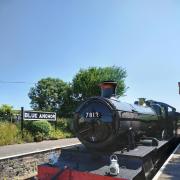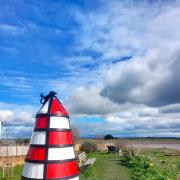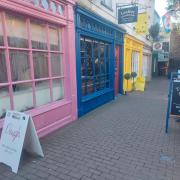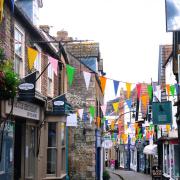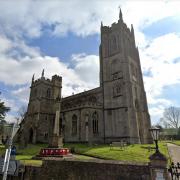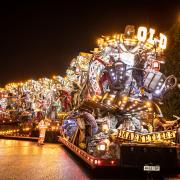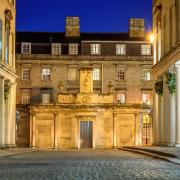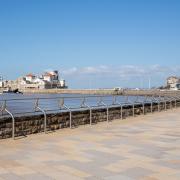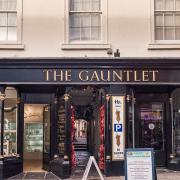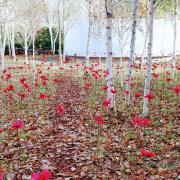We shine a light on some fascinating things you may not know about Dunster, taken from author Tim Taylor’s book, Time Team’s Dig Village
The giant in the dungeon
During excavations on the gatehouse of Dunster Castle in the 18th century, workers discovered an oubliette – a tiny, damp dungeon accessed only through the ceiling – which is said to have contained an 8-foot tall skeleton. The identity of this giant prisoner remains a mystery to this day along with the circumstances that led them to suffer this sorry fate.
-----------------------------------------------------------------------------------------------------
The oldest house
The oldest house in the Dunster is much older than previously thought. Dig Village’s experts used dendrochronology – a scientific method of studying the growth rings from a sample of wood – to accurately date roof beams in several historic buildings. In doing so, they managed to push one presumed date back several centuries to 1307!
-----------------------------------------------------------------------------------------------------
Dunster’s lost harbour
The experts found historic references to ‘waves lapping against the base of the castle’, fuelling speculation that there may once have been a harbour near the castle. Landscape archaeologist Stewart Ainsworth studied data from a new technology called LiDAR (Light detection and ranging) to study the topography and show what it might have looked like.
-----------------------------------------------------------------------------------------------------
The legend of the hidden cannon
Dunster saw action during the Civil War, a period that still leaves its mark on the community today. Legend has it that a cannonball fired during the siege of the castle penetrated the historic Yarn Market. According to local lore, the canon itself is still buried somewhere beneath the streets. That said, despite Dig Village’s extensive scanning using geophysics, the elusive cannon remains undiscovered.
-----------------------------------------------------------------------------------------------------
Fancy a drink?
Dunster isn’t short on places to quench your thirst, with the Luttrell Arms, Stags Head and Foresters Arms, among others, all providing a warm welcome. But at various points throughout history, there were as many as seven or so alehouses operating throughout the town.
-----------------------------------------------------------------------------------------------------
Not a village
Dunster is the archetypal idyllic village. Except, it isn’t a village at all. By the 12th century or earlier, Dunster had been granted a town charter and the high street was built as a commercial centre. The presence of ‘burgage plots’ is testament to this – thin strips of land behind each building for the freemen to grow enough vegetables to sustain their families. Dig Village analysed the existing burgage plots to help plot the development of the town.
-----------------------------------------------------------------------------------------------------
Dunster wool
Today, the promise of cream teas and castle tours brings much trade to Dunster, but its fortunes were built on the once lucrative wool trade – a fact highlighted by the octagonal Yarn Market. So sought-after were wool products created in the area that ‘Dunsters’ even became a nationally recognised brand.
-----------------------------------------------------------------------------------------------------
What’s in a name?
Quite a lot, actually. It’s amazing what you can discover from a seemingly anodyne place name. Dunster probably derives from ‘Dunna’s Torre’, after an ancient Saxon chieftain who resided over the area. Conygar Hill gets its name from the rabbit warrens that once provided meat and fur. In former centuries, Park Street was known as Gallox Street, as it led over Gallox Bridge to the nearby field where the gallows were situated.
-----------------------------------------------------------------------------------------------------
The Tithe Barn
This magnificent structure, likened to a secular cathedral, is today a thriving community space. However, the community may not always have looked upon it with such fondness. The tithe barn was where one tenth of all their hard-earned produce was taxed by the Church.
-----------------------------------------------------------------------------------------------------
The sound of bells
Nothing beats the gentle pealing of church bells mingling with birdsong as you enjoy a country walk around Dunster. But in the 15th century, the bells were regarded as a symbol of oppression. So, the townspeople cut the ropes to the bell tower to silence them in protest against the power of the Church and its adjoining priory.
-----------------------------------------------------------------------------------------------------
Discover more
To discover more interesting facts about Dunster and find out how you can research the history of your own village, check out Time Team’s Dig Village, the ultimate guide to discovering more about the local history and archaeology in your community.
-----------------------------------------------------------------------------------------------------




